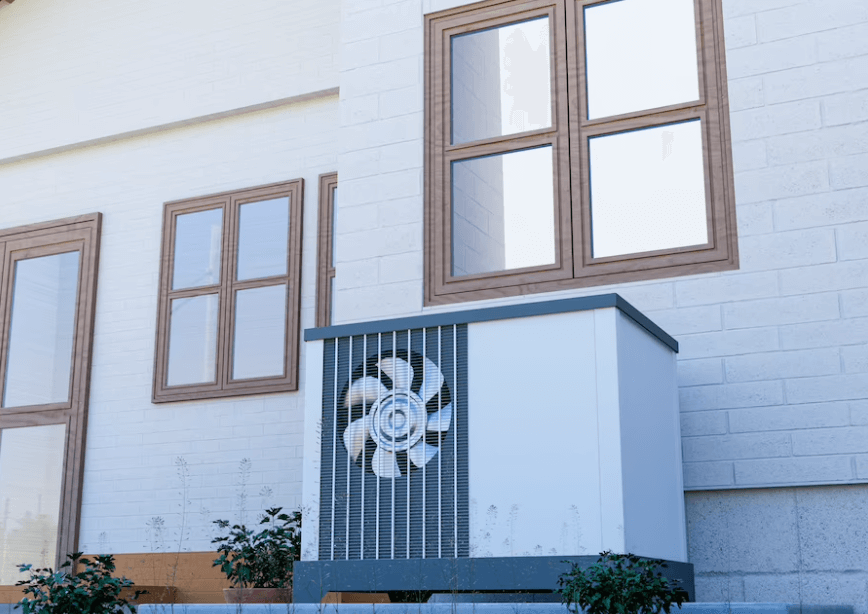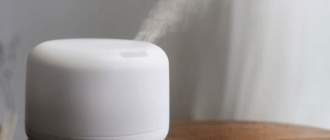Is Your Home Well Ventilated?
Welcome to our blog post on home ventilation, where we dive into the importance of proper airflow in your living space. Have you ever considered how well-ventilated your home is? It’s a crucial aspect that can impact both your health and comfort levels. Poor ventilation can lead to a buildup of harmful pollutants and stale air, resulting in respiratory problems, allergies, and even mold growth. In this article, we’ll explore the signs of poorly ventilated homes and provide practical tips on how to improve indoor air quality for optimal health benefits and energy efficiency. So let’s get started!
The Importance of Proper Home Ventilation
Proper home ventilation is crucial for maintaining a healthy and comfortable indoor environment. It refers to the exchange of indoor and outdoor air, which helps remove stale or polluted air from your home while bringing in fresh air.
One of the most significant benefits of proper home ventilation is improved indoor air quality. Without adequate ventilation, harmful pollutants such as carbon monoxide, volatile organic compounds (VOCs), and radon can accumulate in your home, posing serious health risks.
In addition to promoting good health, proper ventilation can also help improve energy efficiency by reducing the need for heating or cooling systems. This is because efficient airflow through your home reduces temperature imbalances between different rooms.
Another benefit of proper home ventilation is maintaining comfort levels throughout your living space. By ensuring that fresh outdoor air circulates throughout your rooms, you can avoid feeling stuffy or uncomfortable during hot summer months.
It’s clear that proper home ventilation plays a vital role in creating a safe and comfortable living environment for you and your family. In the following sections, we’ll explore some common signs that indicate poor ventilation as well as strategies you can use to improve it.
Health Benefits
Proper home ventilation is not just important for maintaining a comfortable living space, but it also has significant health benefits. When your home is not ventilated properly, the air inside can become stale and polluted with harmful pollutants and allergens that can lead to respiratory problems such as asthma.
Good ventilation promotes healthy indoor air quality by removing excess moisture, smoke, cooking fumes or any other unpleasant odors from your home. This helps prevent the buildup of mold and mildew which are known to cause allergies in some people.
Moreover, adequate airflow provides fresh oxygen-rich air into your lungs keeping them healthy and stimulates blood flow through your body while reducing airborne germs that can spread illnesses like flu or colds among family members.
Additionally, proper ventilation reduces the concentration of volatile organic compounds (VOCs) emitted by common household cleaning products such as detergents or pesticides which have been linked to various health concerns including cancer.
In summary, good ventilation ensures you breathe clean fresh oxygen-rich air free from harmful particles so you can maintain a healthier life at home.
Energy Efficiency
Energy efficiency is a critical aspect of proper home ventilation. When your home is well-ventilated, it can reduce the amount of energy needed to heat or cool indoor air and maintain comfortable temperatures. This results in lower energy bills and reduced carbon footprint.
One way to improve energy efficiency is by sealing any cracks or gaps that may allow air leakage. These leaks can cause unnecessary heating and cooling costs as air escapes through the gaps instead of circulating within the house.
Another way to boost energy efficiency is by incorporating natural ventilation strategies, such as opening windows strategically depending on wind direction or using window coverings to regulate sunlight exposure. Natural ventilation not only improves indoor airflow but also reduces dependency on artificial heating and cooling systems.
Investing in whole-home ventilation systems with heat recovery can significantly improve energy efficiency while ensuring optimal indoor air quality, all year round. Such systems transfer heat from outgoing stale air into incoming fresh air, reducing the need for additional heating or cooling efforts.
Improving your home’s ventilation system will enhance its overall energy efficiency levels while maintaining healthy internal living environments.
Maintaining Comfort
One of the most significant benefits of proper home ventilation is maintaining comfort. When your home has good airflow, it ensures that you’re not living in an environment that’s too hot or too cold.
If your home is poorly ventilated, it can cause humidity issues, making the air feel clammy and uncomfortable. On the other hand, excessive ventilation may make a room overly dry and lead to discomfort.
Proper ventilation will help you regulate temperature and humidity levels in your home effectively. This means that you’ll be able to enjoy comfortable indoor temperatures throughout the year without relying heavily on heating or cooling systems.
Additionally, when you have adequate airflow in your house, it helps keep unpleasant odors at bay. You won’t have to deal with stale smells lingering around as fresh air continuously circulates within space.
Maintaining comfort is essential for a happy and healthy lifestyle which makes proper home ventilation crucial for homes today.
Signs Your Home is Poorly Ventilated
It’s important to know the signs of poor home ventilation in order to assess whether your home is properly ventilated. Condensation on windows can be a sign that moisture is building up inside and not being circulated out, causing potential damage to your windows and walls.
Stale or musty smells are another indication of poor ventilation as it means air isn’t moving through the space efficiently. This can cause discomfort for those living in the home and also lead to health issues such as headaches, congestion, and respiratory problems.
Mold growth is a serious sign of lack of proper ventilation, particularly when it appears on surfaces like ceilings or walls. Mold thrives in moist environments where there isn’t enough airflow, so if you see any mold growth it’s important to take action immediately.
Another indicator could be peeling paint or wallpaper which indicates moisture has built up behind them over time. If left unchecked this could lead to structural damage which may become expensive to repair.
Paying attention these signs can help ensure that your home remains healthy, comfortable and efficient for years to come by identifying areas where improvement might be needed.
Condensation on Windows
Condensation on windows is a common sign that your home may be poorly ventilated. It occurs when warm, moist air comes into contact with cold surfaces, such as windows. This can happen in any room of the house, but it’s most common in areas where there’s a lot of moisture, such as the bathroom or kitchen.
Aside from being unsightly and sometimes difficult to remove, condensation on windows can also lead to other problems if left unaddressed. For one thing, it can contribute to mold growth if the moisture isn’t dried up promptly and effectively.
Another issue with condensation is that it reduces visibility through the window. In extreme cases where there’s a lot of condensation buildup, it could even damage window frames or seep into walls causing structural damage.
If you notice any signs of condensation on your windows regularly despite cleaning them often then this could indicate an ongoing ventilation problem within your home which needs attention before further damages occur.
Stale or Musty Smells
Have you ever walked into your home and noticed a stale or musty smell? This could be an indication that your home is poorly ventilated. Stale air can accumulate in areas of the home where there is little to no airflow, causing unpleasant odors.
Stale or musty smells are often caused by high humidity levels, which can lead to mold and mildew growth. These fungi thrive in damp environments and release spores that can cause respiratory issues for those exposed.
If you notice these smells in certain areas of your home, such as the basement or bathroom, it’s important to address the issue before it worsens. Ignoring the problem could lead to costly repairs down the line.
One solution is improving natural ventilation by opening windows and doors when possible. It’s also crucial to ensure exhaust fans are properly functioning in areas prone to moisture buildup.
Mechanical ventilation solutions like air purifiers with HEPA filters may also help remove any lingering airborne particles causing bad odors.
Remember, if you’re experiencing stale or musty smells in your home, don’t ignore them! Take action now for a healthier living environment.
Mold and Mildew Growth
Mold and mildew growth is a common sign of poorly ventilated homes. These fungi thrive in humid environments, making them a common occurrence in areas with poor ventilation.
Mold and mildew not only look unsightly but can also pose serious health risks if left unchecked for an extended period. They release spores into the air that can cause respiratory problems, allergies, and other health issues.
In addition to causing health concerns, mold and mildew can also damage your home’s structural integrity. If left untreated, they can eat away at walls, floors, or ceilings leading to costly repairs over time.
Preventing mold and mildew growth starts with proper ventilation. Ensuring adequate airflow throughout your home will help reduce humidity levels which will inhibit their growth.
If you notice any signs of mold or mildew growth in your home, it is important to take action immediately by improving your home’s ventilation system and addressing any water leaks or moisture sources promptly.
Assessing Your Home’s Ventilation
Assessing your home’s ventilation is an essential step in ensuring the indoor air quality, energy efficiency, and overall comfort of your living space. There are different ways to assess the airflow in your home, but all methods will help you determine whether there are any issues with how air moves through your house.
One way to assess ventilation is by conducting a simple test using incense or smoke. Light a stick of incense or match and move it around each room while observing the direction of the smoke. If it blows towards windows or doors, it means that there could be drafts entering from outside uncontrolled.
Another method for assessing ventilation involves checking for condensation on windows. If you notice moisture collecting on glass surfaces during cold weather conditions, then this indicates that there might not be enough fresh airflow circulating throughout your property.
You can also inspect exhaust fans and vents in bathrooms, kitchens, and laundry rooms to see if they’re functioning properly. These areas tend to have greater humidity levels than other parts of the house, which makes them prime locations for mold growth and trapped odors when improperly ventilated.
In summary, assessing your home’s ventilation helps identify existing problems as well as potential risks before they cause significant damage to both health and finances due to increased utility bills resulting from inefficient HVAC systems or poor insulation levels – making proper assessment crucial for maintaining overall wellbeing!
How to Improve Your Home’s Ventilation
Improving your home’s ventilation can be a simple and effective way to enhance the air quality inside and promote healthy living. There are various strategies that homeowners can use, whether natural or mechanical, to improve their home’s airflow.
One of the most straightforward ways is by opening windows and doors regularly to allow fresh air in while pushing stale air out. Properly placed fans can also help circulate the air throughout your house.
Another option is using exhaust fans in bathrooms and kitchens to remove moisture, which can lead to mold growth if left unchecked. You may also want to consider installing a whole-home ventilation system that filters and circulates clean air throughout every room in your house.
Sealing gaps around windows, doors, walls, and floors will prevent uncontrolled airflow from outside or between rooms. Similarly, regular cleaning of vents or replacing old HVAC filters will ensure the proper functioning of heating/cooling systems while improving indoor air quality.
By implementing these strategies for improved ventilation in your home, you’ll not only maintain good health but increase energy efficiency too!
Natural Ventilation Strategies
Natural ventilation strategies are an affordable and eco-friendly way to improve your home’s air quality. The first step is to open windows and doors, allowing fresh outdoor air to circulate inside the house. However, this approach may not be practical during extreme weather conditions or in areas with high pollution levels.
Another natural strategy is using ceiling fans or portable fans to increase airflow throughout the home. This can help remove stale indoor air while also improving comfort levels.
Plants can also aid in natural ventilation by absorbing pollutants from the air and releasing oxygen into the environment. Adding a few indoor plants such as spider plants, peace lilies, or bamboo palms can significantly improve indoor air quality.
Additionally, choosing low-VOC (volatile organic compound) paints and cleaning products when renovating or cleaning your home can reduce harmful chemicals’ release into the air.
Incorporating these natural strategies into your daily routine can have a significant impact on your home’s ventilation and overall health benefits.
Mechanical Ventilation Solutions
Mechanical ventilation solutions are an effective way to improve the air quality in your home. These systems use fans and other mechanical components to circulate air throughout your living space, ensuring that fresh air is always flowing in and stale air is being pushed out.
One popular type of mechanical ventilation system is a centralized exhaust system. This type of system uses ductwork and a central fan to draw stale indoor air from the rooms where it’s produced (like bathrooms and kitchens) and expels it outside. Fresh outdoor air then naturally flows in through open windows or vents, creating a constant flow of fresh air.
Another option is a heat recovery ventilator (HRV), which not only brings fresh outdoor air into your home but also recovers up to 80% of the heat energy from the outgoing stale indoor air. HRVs are ideal for cold climates where opening windows isn’t practical during winter months.
There’s also an energy recovery ventilator (ERV), which works similarly to an HRV but can also recover some of the moisture content from outgoing indoor airflow. ERVs are perfect for more humid environments or homes with high levels of moisture like those near bodies of water.
Mechanical ventilation solutions offer homeowners reliable ways to ensure their homes remain well-ventilated year-round without compromising on comfort or energy efficiency.
Whole-Home Ventilation Systems
Whole-home ventilation systems are the most comprehensive and effective way to ensure proper air circulation throughout your home. These systems work by using ducts and fans to circulate outdoor air into your living spaces while simultaneously removing stale indoor air.
One popular type of whole-home ventilation system is a heat recovery ventilator (HRV). HRVs use heat exchange technology to transfer heat from stale indoor air to fresh outdoor air, reducing energy costs while improving indoor air quality.
Another option is an energy recovery ventilator (ERV), which not only transfers heat but also moisture between incoming and outgoing airstreams, helping maintain optimal humidity levels in your home.
Whole-home ventilation systems require professional installation, but they offer long-term benefits such as improved health outcomes, reduced energy costs, and increased comfort. They also help prevent issues such as mold growth and condensation on windows that can be caused by poor ventilation.
Investing in a whole-home ventilation system is a wise choice for homeowners who want to prioritize their indoor air quality.
Conclusion
Proper home ventilation is essential for maintaining a healthy and comfortable living environment. From reducing the risk of health problems to improving energy efficiency, there are many benefits to ensuring that your home has adequate airflow.
If you notice any signs of poor ventilation in your home, such as condensation on windows or musty smells, it’s important to take action right away. By assessing your current ventilation system and exploring natural or mechanical solutions to improve airflow, you can create a more comfortable and healthier living space for yourself and your family.
So if you’re wondering whether your home is well-ventilated, don’t hesitate to take steps towards better indoor air quality today!
Recent Queries:





